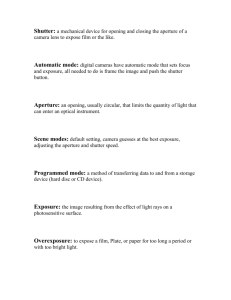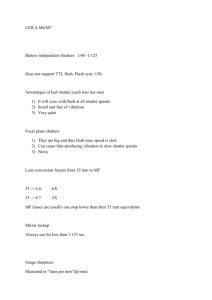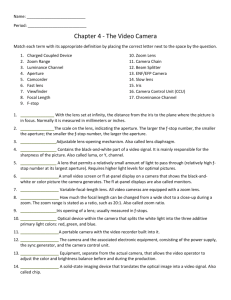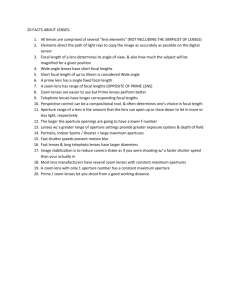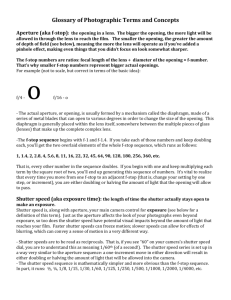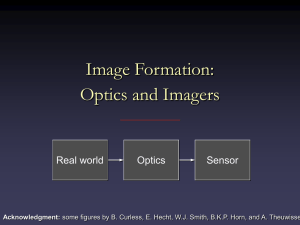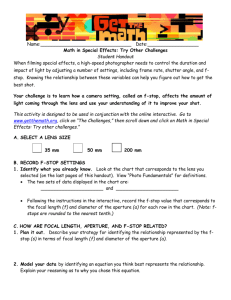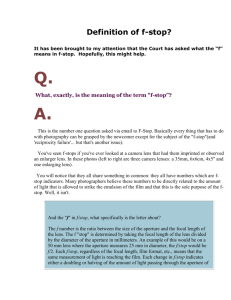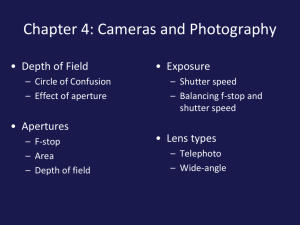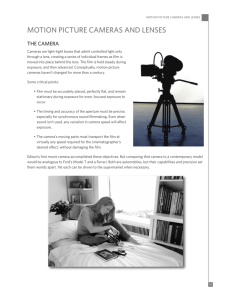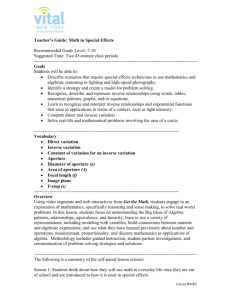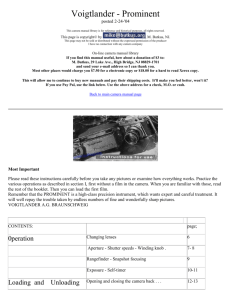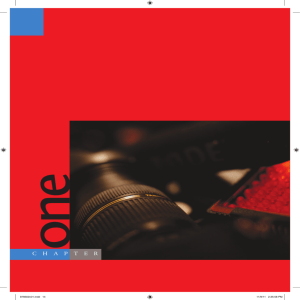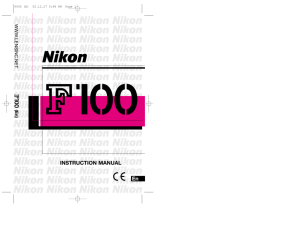PHOTOGRAPHY 1 Michael Yurgeles, Instructor Lecture 3
advertisement
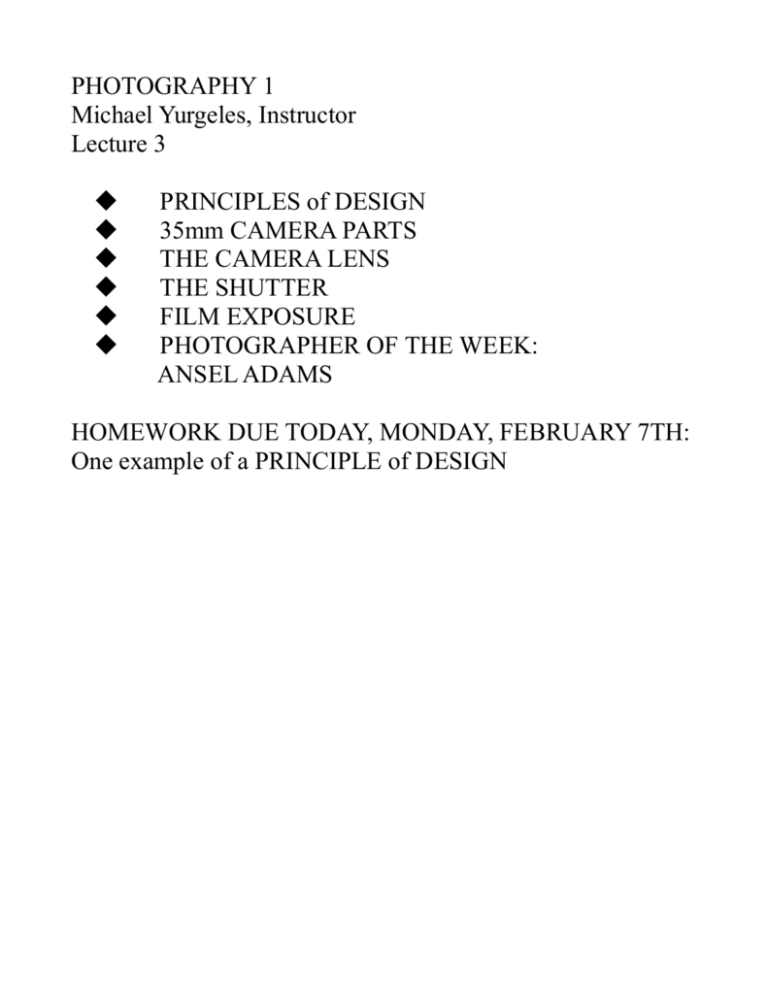
PHOTOGRAPHY 1 Michael Yurgeles, Instructor Lecture 3 PRINCIPLES of DESIGN 35mm CAMERA PARTS THE CAMERA LENS THE SHUTTER FILM EXPOSURE PHOTOGRAPHER OF THE WEEK: ANSEL ADAMS HOMEWORK DUE TODAY, MONDAY, FEBRUARY 7TH: One example of a PRINCIPLE of DESIGN PRINCIPLES OF DESIGN Balance Visual equilibrium- can be symmetrical or asymmetrical. Proportion The relative size and scale of the various elements in a design. Elliott Erwitt. New York City, 1974. Rhythm Timed movement through space. Can be linear, repetitive, alternating, or gradated. Piet Mondrian. Broadway Boogie-Woogie Emphasis The point of focus, or interruption. William Oberhardt Unity The coherence of the whole, the sense that all of the parts are working together to achieve a common result; a harmony of all the parts. Often carried out via pattern. Form follows function. Vincent Van Gogh. Starry Night over the Rhone. The 35 mm CAMERA http://en.wikipedia.org/wiki/History_of_the_camera Leica 1. 1925 Utilized 35mm film stock from the film industry. Nikon F. 1959. First “system” camera. Basic parts of the 35 mm SLR (Single Lens Reflex) camera: A. BODY B. LENS C. LENS ELEMENTS D. FOCUSING RING E. DIAPHRAGM F. APERTURE RING OR BUTTON G. MIRROR H. VIEWING SCREEN I. PENTAPRISM J. METERING CELL K. VIEWFINDER EYEPIECE L. SHUTTER M. FILM N. FILM ADVANCE LEVER O. SHUTTER-SPEED DIAL OR BUTTON P. SHUTTER RELEASE Q. HOT SHOE R. REWIND MECHANISM S. FILM CASSETTE Not shown: REWIND RELEASE BUTTON The Camera Lens Lenses control of affect : focus film exposure angle of view depth of field Manual Focus vs. Autofocus Fixed Focal Length vs. Zoom Focal Lengths: “Normal” lens for 35mm format camera is 50mm. This is make the image about in the same proportion as your eye sees the scene. Wide Angle lenses are below 50mm in focal length. Common fixed wide angle lenses are 35mm, 28mm and 24mm. Telephoto lenses are above 50mm in focal length. Common fixed telephoto lenses are 85mm, 135mm, and 210mm. The angle of view DECREASES as the focal length INCREASES. APERTURE The aperture refers to the size of the opening in the lens that lets light into the camera body, and thus onto the film. Although some lenses have a fixed aperture, most have a range of apertures. The size of the aperture is measured by an f-stop number. The f-stop number is counter-intuitive. The HIGHER the fstop number, the SMALLER the aperture. You could think about the f-stop as a fraction of the lens diaphragm (iris) at its widest opening. For example f/8 as 1/8 of the maximum amount of light possible. Note: this is a simplification of the actual mathematics. For you optical physics fans the focal length of the lens is determined by the diameter of the aperture to arrive at the fstop. Whole F-Stops Each stop lets in twice as much light as the next higher number. Effect on Depth of Field: The higher the f-stop (smaller the aperture), the more is in focus. Note: f-64 Group Ansel Adams Elliott Erwitt. California, 1955.
